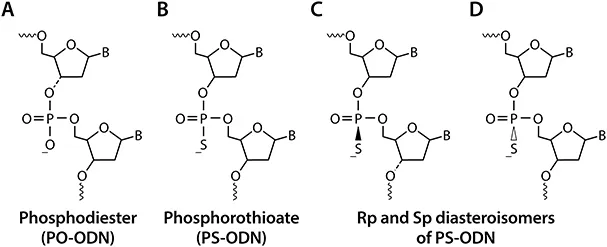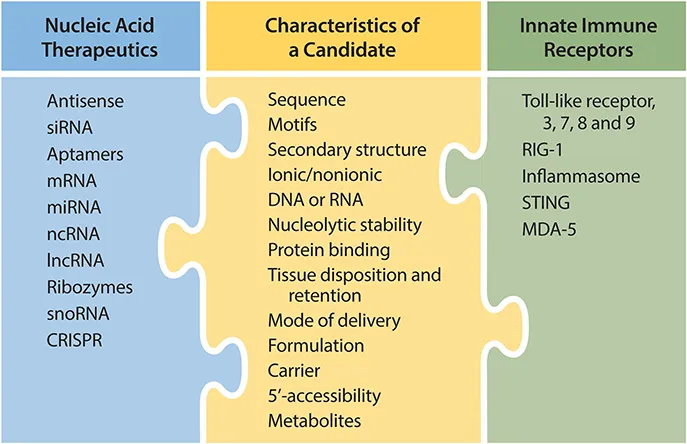
- 541 pages
- English
- ePUB (mobile friendly)
- Available on iOS & Android
Advances in Nucleic Acid Therapeutics
About this book
The sequencing of the human genome and subsequent elucidation of the molecular pathways that are important in the pathology of disease have provided unprecedented opportunities for the development of new therapeutics. Nucleic acid-based drugs have emerged in recent years to yield extremely promising candidates for drug therapy to a wide range of diseases. Advances in Nucleic Acid Therapeutics is a comprehensive review of the latest advances in the field, covering the background of the development of nucleic acids for therapeutic purposes to the array of drug development approaches currently being pursued using antisense, RNAi, aptamer, immune modulatory and other synthetic oligonucleotides. Nucleic acid therapeutics is a field that has been continually innovating to meet the challenges of drug discovery and development; bringing contributions together from leaders at the forefront of progress, this book depicts the many approaches currently being pursued in both academia and industry. A go-to volume for medicinal chemists, Advances in Nucleic Acid Therapeutics provides a broad overview of techniques of contemporary interest in drug discovery.
Frequently asked questions
- Essential is ideal for learners and professionals who enjoy exploring a wide range of subjects. Access the Essential Library with 800,000+ trusted titles and best-sellers across business, personal growth, and the humanities. Includes unlimited reading time and Standard Read Aloud voice.
- Complete: Perfect for advanced learners and researchers needing full, unrestricted access. Unlock 1.4M+ books across hundreds of subjects, including academic and specialized titles. The Complete Plan also includes advanced features like Premium Read Aloud and Research Assistant.
Please note we cannot support devices running on iOS 13 and Android 7 or earlier. Learn more about using the app.
Information
*E-mail: [email protected], [email protected]
The nucleic acid-based drug discovery approach is now being recognized as a major platform in addition to small molecules and peptide- or protein-based platforms. Advancement in nucleic acid based drugs has been aided by the chemistry of oligonucleotides and nucleic acids in providing drug-like properties. Early experience was gained with respect to the use of the chemistry of oligonucleotides for use as antisense agents. These chemical structure–activity relationship studies included modification of the backbone, heterocyclic bases and sugars, or combinations thereof. In this chapter we discuss early developments in the chemistry of nucleic acids that have guided the design and successful development of antisense drugs as well as nucleic acid-based platforms employing many other mechanisms, including aptamers, siRNA, exon skipping, ribozyme, microRNA and non-coding RNA and immune modulation.
1.1 Introduction
1.2 The Antisense Concept
1.3 Developments in Oligonucleotide Synthesis
1.4 Choices for Antisense Oligodeoxynucleotide Modifications

1.4.1 Backbone Modifications

1.4.1.1 Phosphorothioates
Table of contents
- Cover
- Half Title
- Series Editors
- Title
- Copyright
- Preface
- Contents
- Chapter 1 History and Development of Nucleotide Analogues in Nucleic Acids Drugs 1
- Chapter 2 Mechanisms of Antisense Oligonucleotides 22
- Chapter 3 The Medicinal Chemistry of RNase H-activating Antisense Oligonucleotides 32
- Chapter 4 Antisense Technology: Liver Targeting and Beyond for Drug Discovery 62
- Chapter 5 Oligonucleotide-based Toll-like Receptor Antagonists and Therapeutic Applications 80
- Chapter 6 Splicing Modulation for Therapeutics 103
- Chapter 7 Targeting Toxic Repeats 126
- Chapter 8 Research and Development of Oligonucleotides Targeting MicroRNAs (miRNAs) 151
- Chapter 9 Oligonucleotide Targeting of Long Non-coding RNAs 181
- Chapter 10 Conjugate-mediated Delivery of RNAi-based Therapeutics: Enhancing Pharmacokinetics–Pharmacodynamics Relationships of Medicinal Oligonucleotides 206
- Chapter 11 Liver-targeted RNAi Therapeutics: Principles and Applications 233
- Chapter 12 Advances and Challenges of RNAi-Based Anti-HIV Therapeutics 266
- Chapter 13 Nucleic Acid Innate Immune Receptors 292
- Chapter 14 Synthetic Agonists of Toll-like Receptors and Therapeutic Applications 306
- Chapter 15 Prostate-specific Membrane Antigen (PSMA) Aptamers for Prostate Cancer Imaging and Therapy 339
- Chapter 16 Aptamers and Clinical Applications 367
- Chapter 17 CRISPR-based Technologies for Genome Engineering: Properties, Current Improvements and Applications in Medicine 400
- Chapter 18 Therapeutic Potential of Ribozymes 434
- Chapter 19 Large-scale Automated Synthesis of Therapeutic Oligonucleotides: A Status Update 453
- Chapter 20 Preclinical and Clinical Drug-metabolism, Pharmacokinetics and Safety of Therapeutic Oligonucleotides 474